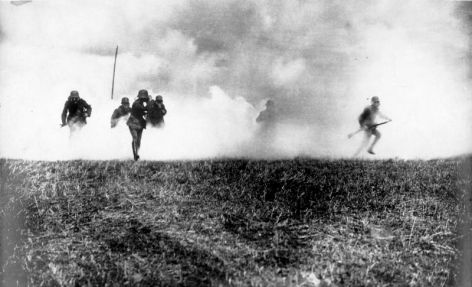The Day Our Modern Age Began
Some believe our modern world began when mankind began using technology to kill mass numbers in war. This has an important connection to Bible prophecy.

So when did our modern modern age begin? In other words, when did the world as we know it today dawn?
Consider these possibilities:
- The end of Queen Victoria’s reign. After reigning for much of the 19th century, Queen Victoria died in January 1901. Her reign was the longest in the history of the British monarchy. Her cosmopolitan son ascended the throne as Edward VII. Some consider the end of the Victorian era to be the beginning of the modern era.
- The sinking of the Titanic. The Titanic disaster shattered the public’s trust—almost worship—of the marvel and safety of technology. Civilization began to realize that technology would not solve their problems—but could create new ones.
- World War I. Just two years later, World War I erupted, changing the world forever. In fact, it can be argued that World War I truly launched our world into modernity.
Let’s consider one of the aspects of World War I that still shapes the world with frightening portent—the day chemical weapons were first used.
History textbooks commonly emphasize Germany’s use of chemical weapons, but it was actually the French who first used tear gas grenades against German invaders in August 1914. However, the French-made grenades were rather ineffective, and it was Germany that was able to develop and manufacture very effective poisonous chemical weapons on an industrialized scale.
The day our modern age began
It was about 5 p.m. on April 22, 1915, when chlorine gas was used for the first time on an opposing army. Warfare would be changed forever. Survivors described it as a curious yellow-green cloud drifting slowly toward the trenches. Within seconds of inhaling the vapor, soldiers experienced extreme nausea and their respiratory organs were damaged or destroyed, resulting in choking and sometimes death.
World War I began the modern era of warfare—an era that has left multiple millions dead.
Until the armistice was declared in November 1918, gas was used by both sides in the Great War. But chlorine was just the beginning. Then came phosgene (an invisible gas that poisons through suffocation) and mustard gas (which causes burns and blisters). Adolf Hitler was actually temporarily blinded during a gas attack while he was a foot soldier during World War I.
Though gas was later outlawed from warfare in 1928 by the Geneva Protocol, there is more to the story.
A wretched twin legacy
Out of the estimated 8 billion shells of all sizes fired during World War I, millions were “duds” and remain buried in the battleground.
Each year tons of these unexploded shells from the “war to end all wars” are unearthed, often by farmers plowing their fields. Long ago, the guns fell silent, yet their shells still kill! It is not uncommon for European news to report someone being killed by an exploding World War I–era shell.
World War I began the modern era of warfare—an era that has left multiple millions dead.
From mankind’s beginning
In The Guns of August, which chronicles the beginnings of World War I, historian Barbara Tuchman quoted an earlier treatise on war: “The human heart is the starting point of all matters pertaining to warfare” (1990, p. v). The Bible agrees. Jeremiah 17:9 says that our hearts are “desperately wicked.” The book of James asks, “Where do wars and fights come from among you?” and then we are told that our lusts are the root cause (James 4:1-2).
War is physical in nature, but it has a spiritual cause. One of the earliest events of mankind’s history was the first murder, when Cain killed his brother Abel (Genesis 4). Consider that many conflicts have been fratricidal in nature—in other words, brother against brother. From the beginning, mankind has increasingly sought ways to kill his fellow man.
On April 22, 1915, humanity opened the door to our modern age. The science of destruction continued to progress, leading to the development and use of the atomic bomb. This deadly technology was first used at Hiroshima, Japan, on Aug. 6, 1945. Before this time, mankind never had the capacity to kill so many in a matter of seconds.
While the atomic bomb essentially ended World War II, the legacy of that first atomic bomb lives on today. It has led to the development of even more destructive weapons that can kill even more people than the atomic bomb could!
This technology of mass destruction will ultimately lead mankind into the time prophesied in Matthew 24:22: “Had not those days been cut short, not a soul would be saved alive” (Moffatt Translation). This prophecy’s fulfillment has only become physically possible since the nuclear age began in 1945.
Dawn of a new age
The good news is that humanity won’t end in total destruction! Jesus Christ will return to save mankind from mankind! He will not allow us to annihilate ourselves with weapons of mass destruction.
After Jesus Christ returns, He will enforce peace and end the production and proliferation of weapons of war (Isaiah 2:4). Mankind will not “learn war any more” (Micah 4:3). Like the fateful days in 1915 and 1945 that began new ages of destruction, the day Christ returns will begin a new age—but one that is totally different. It will be a new age when mankind will finally learn peace and no longer use technology to destroy.
To learn more about this coming age of peace, read our article “Neither Shall They Learn War Anymore,” which appeared in the inaugural issue of Discern magazine.
Date Posted: March 3, 2015

